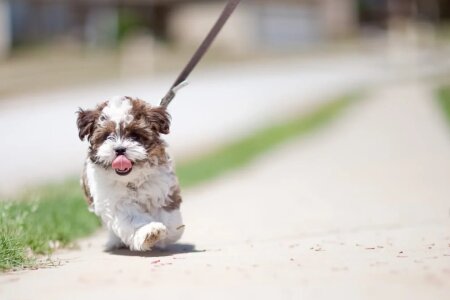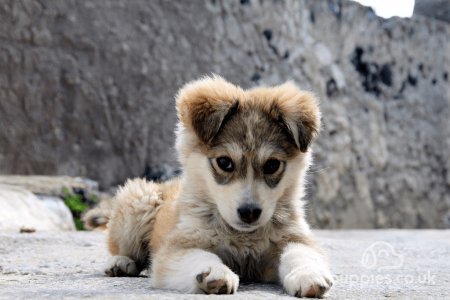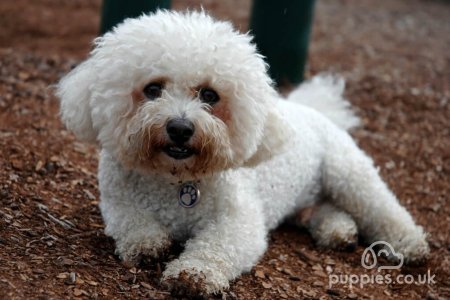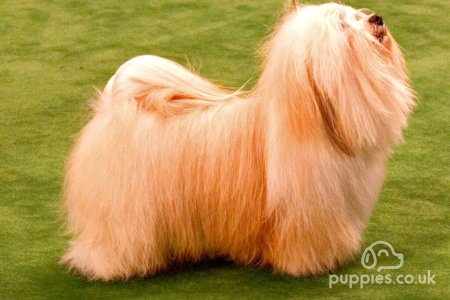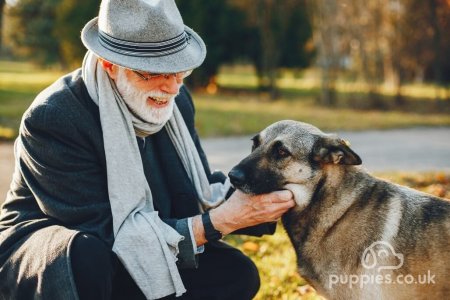Dogs Before Selective Breeding: Here’s What They Looked Like
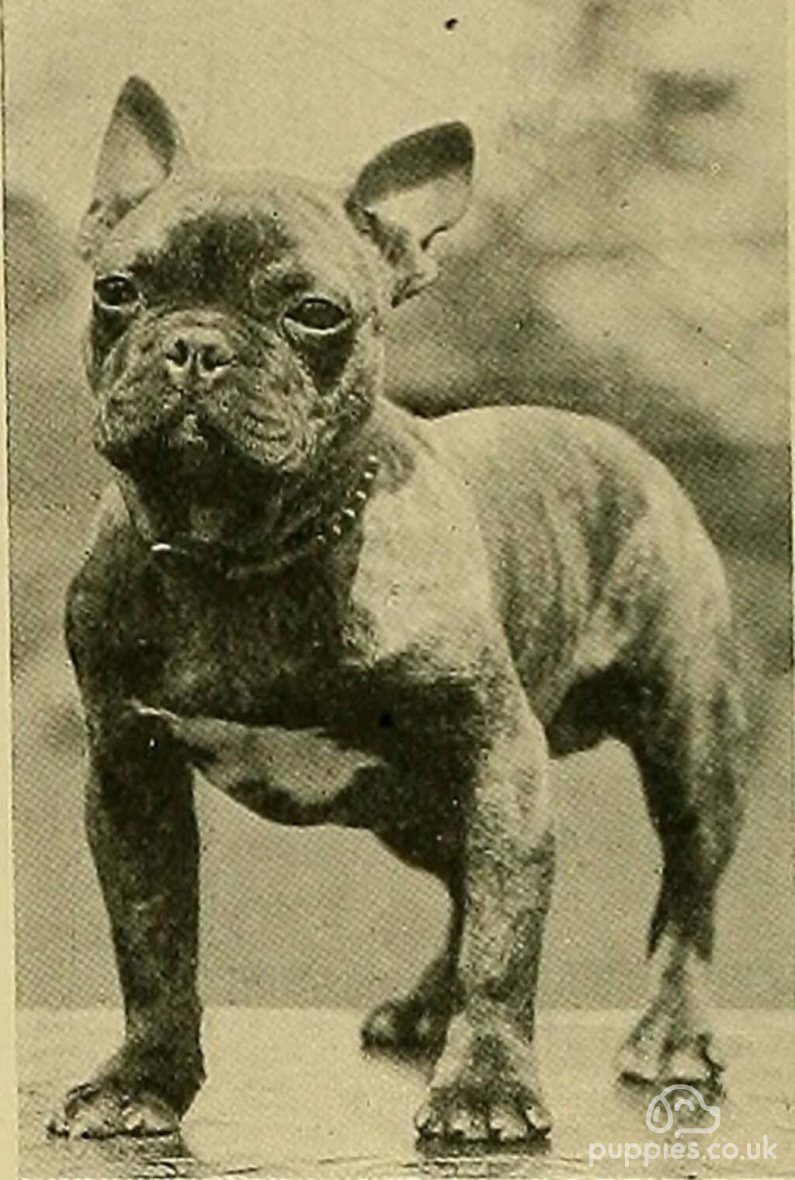
Dogs Before Selective Breeding: Here’s What They Looked Like
Many of the most popular dog breeds have changed drastically over the last century due to selective breeding. Humans identified specific traits that were deemed to be desirable and used breeding to enhance these traits. Seeing side-by-side images shows us just how much these dog breeds have changed over time.
1. English Bulldog
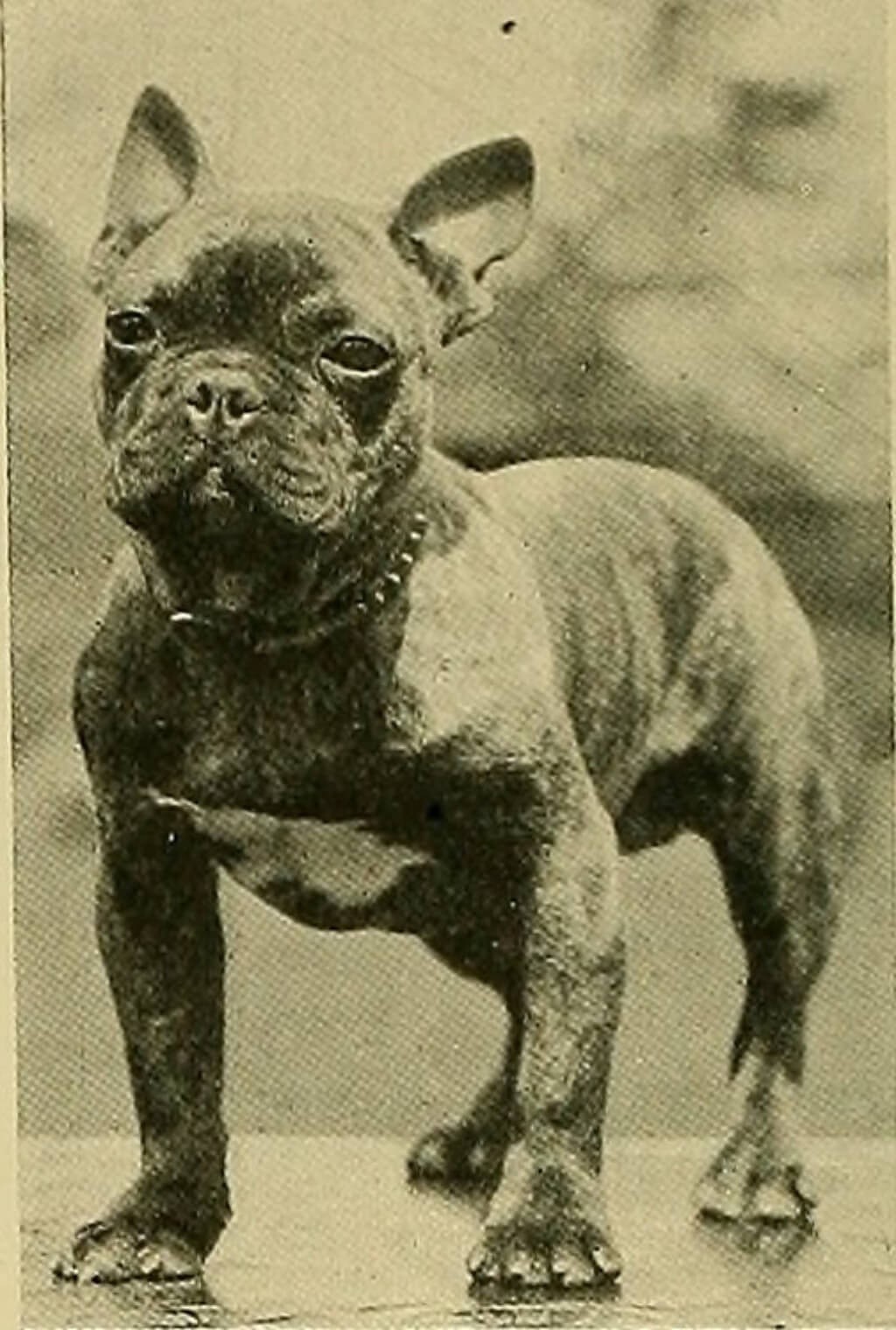
CC0 1.0 Universal (CC0 1.0) Public Domain Dedication - Internet Archive Book Images
Appearance: The English Bulldog’s appearance has changed radically due to selective breeding. A lot of the selective breeding in early English Bulldog history (1600’s) was to enhance the characteristics that would help them when bullfighting (stocky body, wide legs, facial wrinkles to keep sweat/blood away from their eyes, a short muzzle and underbite to be able to grip the bull).
In the UK, bullfighting was outlawed in 1802. Since then, the English Bulldog has been selectively bred to make its features more extreme. Their body is now thicker and lower to the ground with wide-set legs. Modern English Bulldogs have a short muzzle, a wide jaw with a large underbite and their facial wrinkles are more pronounced. They also have a short tail which impacts their spinal health.
The changes to the English Bulldog have meant they are now one of the flat-faced dog breeds and they also struggle to reproduce and deliver puppies naturally.
Temperament: Bulldogs were originally bred for bullfighting so they were specifically chosen for their ferocious temperaments. Fortunately, this has been bred out with the end of bullfighting and a rise in breeders revisiting the calmer characteristics of the breed.
Modern English Bulldogs are known for being loyal, easy-going, and highly adaptable.
English Bulldogs remain courageous but their smaller snouts mean that they experience breathing difficulties so they can’t do much physical activity and they tend to be sensitive to the heat too.
Size: 24-28kg now, 18-22kg in the 1700s
Height: 31-40cm
Life Expectancy: 8-10 years
2. Pug
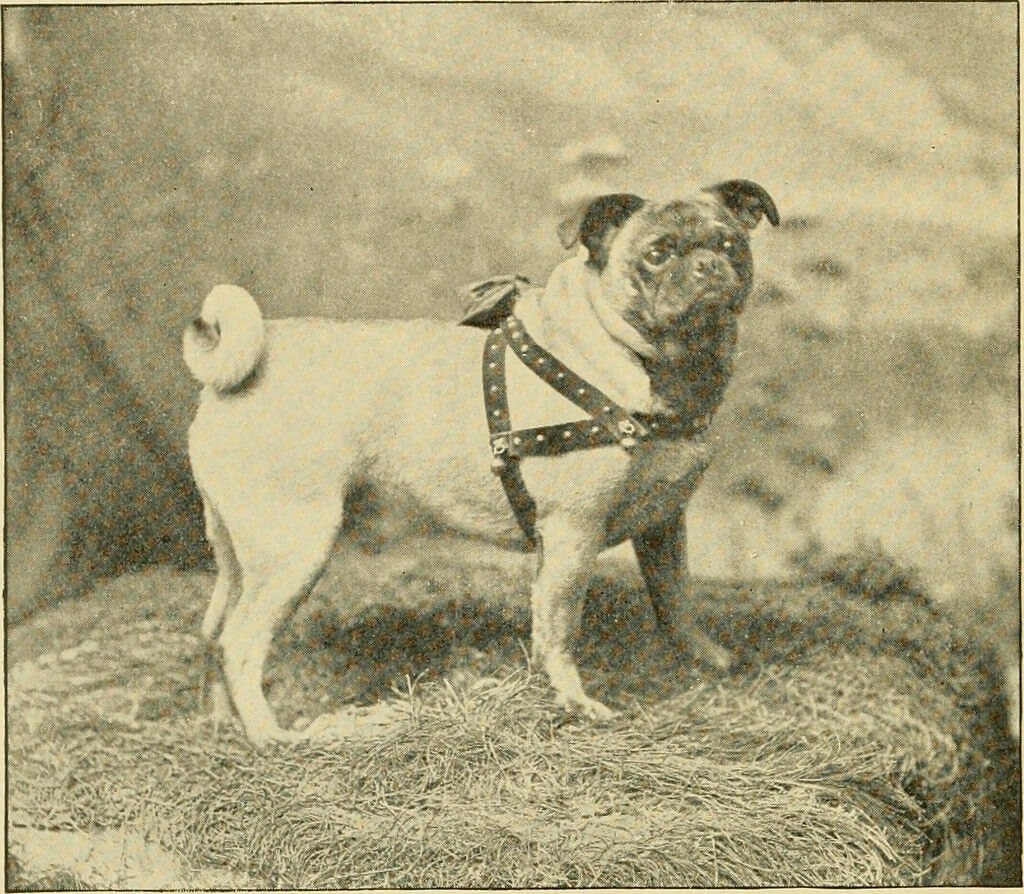
CC0 1.0 Universal (CC0 1.0) Public Domain Dedication - Internet Archive Book Images
Appearance: In the 1700s, the Pug was a popular small-medium-sized dog. These dogs before selective breeding had longer legs, a longer snout, and a regular-shaped face without the bulging eyes they are known for today.
The modern Pug has been selectively bred to be “cute” and many of the traits the selective breeding focused on were related to the Pug’s head and face.
Pugs now have flat, wrinkled faces, bulging eyes, and a short snout. As a result of this selective breeding, Pugs now suffer from many health problems including breathing difficulties, eye problems, and hip dysplasia.
Temperament: Pugs have always been companion dogs, they are an ancient breed that originated in China where they were popular companions for royalty. Modern Pugs are also lapdogs and are happiest when they are around people. Pugs are known for being playful, energetic, and entertaining to be around.
Size: 6-8kg
Height: 25-26cm
Life Expectancy: 12-14 years
3. Great Dane
Appearance: Over time Great Danes have been bred to be taller, with a squarer jaw, and a deeper chest. They were bred to be big, strong, and fast so they could tackle wild boar.
Today’s Great Danes remain huge in size but are known to suffer from cardiac disease, bloat, and orthopaedic problems due to their giant size.
Temperament: Despite once being fierce dogs that were used for hunting, today’s Great Danes are loving, well-mannered, and calm. They are great companion dogs but need a lot of living space.
Size: 46-62kg
Height: 71-81cm
Life Expectancy: 8-10 years
4. German Shepherd
Appearance: The German Shepherd was described as having a straight back, deep chest, and strong loins in 1915. Modern German Shepherds are now much larger and have been bred to have a sloping back.
Health problems associated with modern German Shepherds include hip dysplasia, elbow dysplasia, ocular problems, and digestive issues.
Temperament: Not much has changed in terms of temperament for German Shepherds, they are known for being intelligent, protective, and hardworking dogs. The German Shepherd’s role hasn’t changed in the past 100 years either, they continue to be used for police work today.
Size: 30-40kg now, 24kg in 1915
Height: 55-65cm
Life Expectancy: 10-12 years
5. Bloodhound
Appearance: The modern Bloodhound has been bred to enhance their facial wrinkles which makes them prone to experiencing skin problems including fold dermatitis. They also have much longer ears than they did 100 years ago. Today’s Bloodhounds are highly susceptible to bloat, ear problems and eye problems.
Temperament: Bloodhounds are quiet dogs with gentle, loving natures. They are affectionate with people and can be protective of their loved ones.
Size: 45-60kg
Height: 61-69cm
Life Expectancy: 8-10 years
6. Boxer
Appearance: The Boxer has been bred to have a shortened snout, lower dropped ears, facial wrinkles, a different jaw shape, and a large nose. All of these features were so the Boxer would be able to hunt more effectively.
Their jaw and face shape allowed them to hold onto prey while being able to breathe (in the 1800s it was not known that a flatter face can cause dogs to have breathing problems) and their wrinkles were to help guard their eyes against blood.
Boxers were also chosen for breeding based on their size and strength, as well as traits such as bravery and loyalty.
Temperament: Boxers are energetic dogs that love to play, they are entertaining to be around and are known to be great with people. Boxers are protective so are natural guard dogs and they are patient family pets too.
Size: 35-32kg
Height: 53-63cm
Life Expectancy: 10-12 years
7. Cavalier King Charles Spaniel
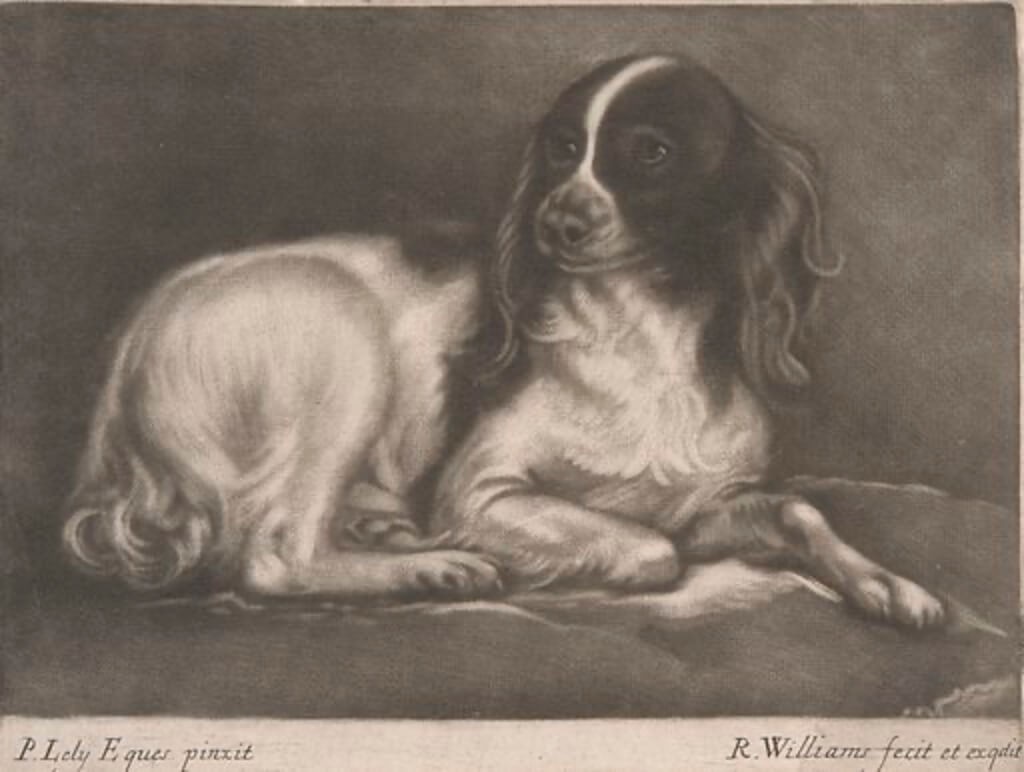
CC0 1.0 Universal (CC0 1.0) Public Domain Dedication - Yale Center for British Art
Appearance: The distinguishing features of the modern Cavalier King Charles Spaniel include its large eyes, floppy ears, and long feathered coats.
The Cavalier was one of the first breeds to be bred based on their appearance rather than for their ability to do a specific job. This selective breeding for looks has meant modern Cavalier King Charles Spaniels are prone to many diseases including heart failure, syringomyelia, retinal dysplasia, and cataracts.
Temperament: These small dogs are friendly, outgoing, and affectionate. Cavaliers are people pleasers and they are quick to learn new things. It is no surprise Cavaliers were popular companions in the past as they continue to be relaxed dogs that love to be around people.
Size: 4.5-8.2kg
Height: 30-33cm
Life Expectancy: 12-14 years
8. Shar Pei

Attribution 2.5 Generic (CC BY 2.5) - Olsson et al.
Appearance: Shar Peis have been bred to exaggerate their physical features, particularly their wrinkled skin. As a result of this, Shar Peis are known to suffer from a number of health issues including thyroid gland issues, “Shar Pei Fever” which is swelling of the hock joint, cancer, elbow dysplasia and hip dysplasia, and eye problems.
Temperament: Modern Shar Peis are known for being independent, strong-willed, and protective. They make great guard dogs as they are tough, alert, and don’t mind spending short periods of time alone.
Size: 18-29kg
Height: 46-51cm
Life Expectancy: 12-14 years
9. Schnauzer
Appearance: Since 1915, the Schnauzer has been bred to be more compact with a longer snout and a more prominent coat and beard. Schnauzers are prone to a skin disorder called Schnauzer comedo syndrome and they are susceptible to vision problems too.
Temperament: Schnauzers are friendly, intelligent, and affectionate. They love being around people but they can be territorial so they make good watchdogs. In the past Schnauzers were known to be versatile dogs that were strong but small and were excellent ratters.
Size: 4.5-8.2kg
Height: 33-35.6cm
Life Expectancy: 12-14 years
10. Bull Terrier
Appearance: The Bull Terrier has been bred to have a shorter face with a more prominent jaw and nose bridge. The head of the Bull Terrier is now shaped like a rugby ball and it is arguably the breed's most recognisable feature.
There have also been changes to their body shape as they have been bred to have shorter legs but more muscular bodies.
One of the most common health issues for Bull Terriers is allergies, the breed is also known to suffer from hereditary deafness, heart murmurs, and eye problems. Due to the shape of the head, some Bull Terriers experience an inversion of the canine teeth too.
Temperament: Modern Bull Terriers are known for being intelligent, friendly, and alert. They make excellent watchdogs as they will bark when strangers approach but they will not be aggressive. Bull Terriers can be stubborn but overall are loyal companions.
In the past, Bull Terriers were used for fighting so were bred for strength and aggression but they are now known for being friendly and docile.
Size: 20-30kg
Height: 50-55cm
Life Expectancy: 10-12 years
How Has Selective Breeding Affected These Animals Over Time?
There are a number of health problems selective breeding has caused in dogs, the most common include:
Skin Problems
Skin problems are commonly seen in pure-bred dogs, particularly dogs that have been bred to exaggerate their wrinkled skin and skin folds. Other dogs such as terriers and Dalmatians are prone to atopic dermatitis which is inflammation of the skin.
Blood Disorders
Blood disorders and cardiovascular diseases are common in Basset Hounds and Dobermans. High blood pressure is also a problem for smaller dogs including Cocker Spaniels and Poodles.
Orthopaedic Problems
Bone-related problems are common in dogs that have been bred to have short legs, smaller dogs, as well as large dogs and heavier breeds.
Dogs with short legs such as Dachshunds suffer from bowed legs while toy dog breeds are more likely to experience dislocations of the kneecap.
Bigger dogs are known to suffer from elbow dysplasia and hip dysplasia as their size puts a lot of pressure on their bones. Dogs with large heads or large necks often experience spinal issues due to the pressure on their spinal cord and vertebrae.
Cancer
Larger dogs including Labradors, Rottweilers, Great Danes, and Irish Wolfhounds are at higher risk of cancer including bone cancer. The Scottish Terrier is 18 times more likely to get bladder cancer than other dog breeds.
Hereditary Hearing Loss
Dalmatians, English Setters, and Australian Cattle Dogs are all known to carry a genetic defect that causes hearing loss, this defect is magnified by selective breeding. Similarly, Bichon Frise, Huskies, and Samoyed are known to suffer from hereditary cataracts that affect their vision.
Found The Right Dog Breed For You?
When choosing which dog breed suits you and your lifestyle, research the breed history, health and associated costs of dog ownership and use Puppies to find a healthy puppy from a reputable breeder who has health-checked the parents and puppies.






